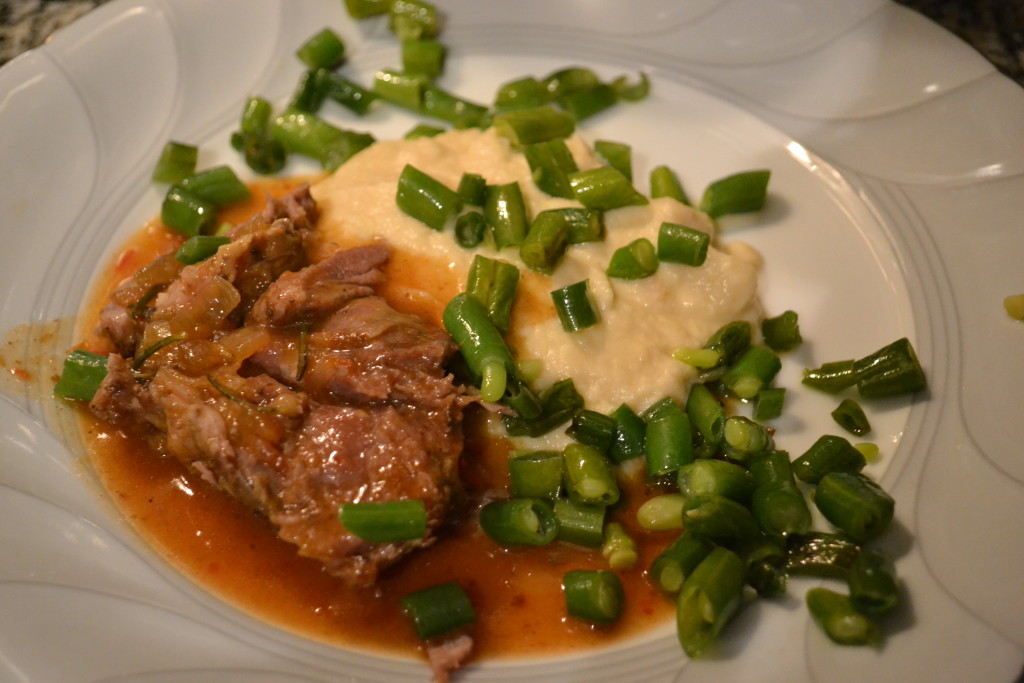On Sunday supplement
Food and Wine
Spring has sprung, more or less, the temperature is doing the montaña rusa and the rains they be a falling. Yeah, that’s spring here in BA. One day it’s t-shirt and shorts, the next it’s sweaters and umbrellas. One day it’s ceviche on the patio, the next it’s a bowl of hearty, steaming stew.
In the kitchen, spring is all about bunnies and lambs. Or maybe that’s some sort of proverb. All I know is that once summer rolls around, it’s rare that I’m going a rustic dish of lamb, though, perhaps as the weather warms we’ll come back around to it with a delicious summer dish of thin slices with green olive tapenade, all over a citrus and arugula salad. Remind me about that down the line.
Let’s talk a little bit about sheep. There are a variety of different terms, depending on what part of the English speaking world you’re from. The three most basic are lamb, hogget and mutton, in that order – which are defined by their teeth. Yes, I know, you thought it had something to do with age, and, in some places it may. Or may not. Classically, a lamb has yet to have any “permanent incisors”, in other words, the tooth fairy has yet to visit. A hogget has, at most, two visits from said winged pixie, and a mutton has had more than two.
But, for example, in my home country of the U.S., by law, all of them are called lamb, or at least when they’re served on a plate. It doesn’t mean no one ever serves up a “mutton chop”… chefs are such mavericks. And even among the lambs there is variation – milk-fed lamb, lechon, is unweaned, less than 8 weeks old, and weighs in under 8 kilos; while spring lamb is 3-5 months old, and, not surprisingly, has to have been born in spring.
All too confusing and far less interesting than simply cooking one up, no? This week we’re going to look at a slow cooked lamb dish inspired by a traditional braise from our neighbors to the west in Chile, where typically it’s a way of using the garrón or antebrazo, or, the “forearms” that otherwise tend to end up tossed into stockpots for making broth. In our version, we’re using lamb shoulder, or paleta de cordero, though this will work with lamb leg as well.
Slow Braised Lamb Shoulder
1 kilo of lamb shoulder (weight without bone, so roughly a 2.5 kg shoulder)
1 large onion
3 cloves of garlic
1 tablespoon merkén (a Chilean dried pepper, if not available, use hot paprika – pimentón picante)
250 ml white wine
200 ml carton tomato puree
2 sprigs of rosemary
1.5 liters stock (lamb, beef, vegetable – from “cubes” is fine)
20 ml olive oil
salt and pepper
A choice here – you can have your butcher cut the shoulder into serving pieces if you like, or you can simply remove all the meat from the bones and cook this dish without them. You’ll get a richer braise with the bones in the pot, but, you’ll need a bigger pot.
Heat the oil in a stew pot big enough to hold all the lamb pieces. Brown the lamb pieces on all sides and then set them aside in a bowl for the moment. Add the onion and garlic to the pot and cook until lightly browned. Add the tomato puree and chili and cook for 3 minutes, stirring regularly. Add the wine and cook for about 5 minutes to blend the flavors.
Add the lamb pieces back in and top off with the stock – just enough to reach the same level as the lamb. Bring to a simmer, reduce the heat to a minimum, cover the pot and let it cook for about 2½ to 3 hours, until the lamb is completely tender.
Ladle out about 500 ml of the stock into a separate small pan, preferably a wider one, and place it over high heat – we’re just going to evaporate and concentrate the liquid down to become a rich sauce. When it’s the consistency of a nice gravy, reduced by about 2/3, season it to taste.
While the folks on the other side of the mountain typically serve their braised lamb with either potato or squash purees, much the same side dishes we see here, our favorite is to serve it up with a puré rustico of cauliflower – simply simmering the florets from a medium sized head of cauliflower in salted water until soft and then blending it in blender or food processor with a clove of garlic, a handful of chives, a small tomato, and oft-times, a slice or two of cooked bacon, salt and pepper to taste of course. Add some green vegetable if you like – quickly sauteed green beans are a family fave.
A series of recipes and articles that I started writing for the Buenos Aires Herald Sunday supplement, Food & Wine section, at the beginning of 2012. My original proposal to them was to take local favorite dishes and classics and lighten them up for modern day sensibilities. We’re not talking spa or diet recipes, but at the very least, making them healthier in content, particularly salt, fat and portion size. As time went by, that morphed into a recipe column that, while emphasizing food that is relatively “good for you”, wasn’t necessarily focused on local cuisine. At the beginning of 2013 I decided to stop writing for them over some administrative issues, but it was fun while it lasted.
